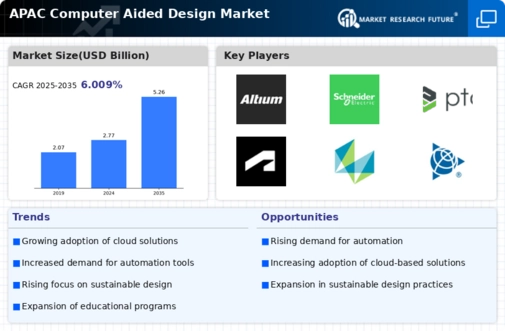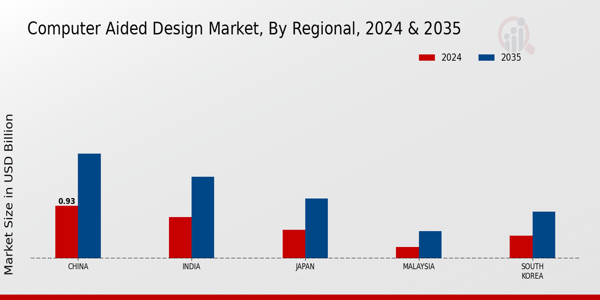The APAC Computer Aided Design Market is characterized by rapid technological advancements and increasing demand across various sectors including architecture, engineering, and manufacturing. As organizations strive to innovate and streamline their design processes, a number of key players have emerged, each contributing distinct strengths to the competitive landscape.
The market is witnessing robust growth driven by the rising adoption of digital technologies, the integration of Artificial Intelligence, and the need for efficient design solutions. With a diverse range of applications and a significant focus on product development, companies are continuously adapting their strategies to maintain competitiveness.
This competitive insight presents a view into how leading firms in the region position themselves and respond to emerging trends and consumer demands.Altium has established a significant presence in the APAC Computer Aided Design Market by specializing in electronic design automation through its integrated circuit design software. The company is recognized for its innovative solutions, which enable design engineers to efficiently create and manage complex electronic designs.
Altium's strengths lie in its user-friendly interface, powerful design capabilities, and seamless collaboration features that cater to teams of varying sizes. By focusing on enhancing user experience and providing comprehensive support, Altium has managed to build a loyal customer base in the APAC region.
Their commitment to continuous improvement and adoption of cutting-edge technologies positions them effectively amidst growing competition.Schneider Electric’s influence in the APAC Computer Aided Design Market reflects its commitment to sustainable digital transformation and smart technologies. The company offers a range of solutions that encompass energy management and automation, integrating advanced design tools with sustainable practices tailored for the region.
Schneider Electric’s strength lies in its robust suite of software applications that empower designers to optimize efficiency and rethink energy consumption in their projects. Notably, their key offerings such as EcoStruxure and other design tools have enhanced their market appeal.
The company continues to expand its reach through targeted mergers and acquisitions aimed at enhancing its digital and technological capabilities in the APAC region, ensuring it remains a key player driving innovation in the market while also fostering sustainability.





















Leave a Comment